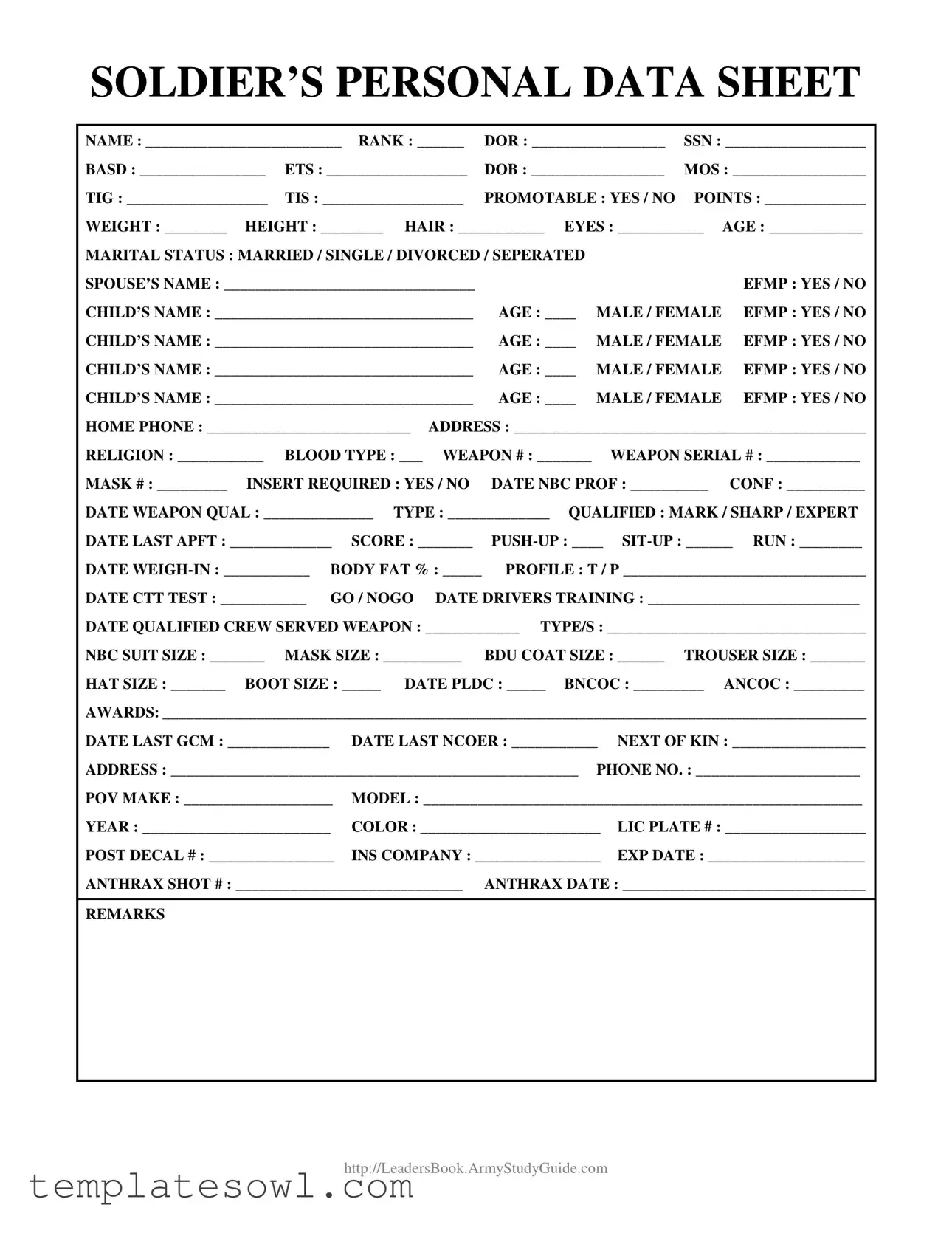What is the purpose of the Personal Data Sheet form?
The Personal Data Sheet form serves as a comprehensive document to collect essential information about a soldier. It includes personal details, military information, health-related data, and family information, which can be important for various administrative functions and deployments.
What information do I need to provide about my family on the form?
You will need to provide details about your marital status, the name of your spouse if applicable, and information about your children, including their names, ages, and whether they are eligible for the Exceptional Family Member Program (EFMP). This information helps the military in understanding the family dynamics and potential support needs of the soldier.
Why is my height, weight, and physical fitness information requested?
This information is used to assess a soldier's physical readiness and ensure compliance with fitness standards. Height and weight are vital for determining body fat percentages, which can affect eligibility for certain duties and roles within the military. Additionally, the form requests records of physical fitness test performances to evaluate physical capabilities.
What are the categories listed under awards, and why are they important?
The awards section allows soldiers to list any commendations or recognitions received during their service. This information is crucial for record-keeping and can influence promotions, assignments, and overall career advancement within the military. Accurate documentation of awards also ensures that soldiers receive the honors and benefits they have earned.
How do I indicate my military occupational specialty (MOS) on the form?
The MOS is a crucial component of the form. You would write your specific military job classification next to the designated area labeled 'MOS.' This indicates your area of expertise and informs the command structure about your skills and roles in various assignments.
What should I do if I have more than four children to list?
The form includes space for details about up to four children. In the event you have more than that, you may need to attach a separate document listing additional children, including their ages and relevant information. Ensure that all siblings receive the same consideration in terms of recognizing any EFMP needs.
How is the information in the Personal Data Sheet kept secure?
The information provided in the Personal Data Sheet is treated with confidentiality. Military personnel are trained to handle personal data responsibly, and it is stored securely according to regulations governing privacy and data protection. Access to this information is limited to authorized personnel for legitimate purposes.
What should I include in the remarks section?
The remarks section is an opportunity to include additional pertinent information that may not be captured in the other fields. This might include special medical needs, important family considerations, or any other information that could assist in managing your service effectively.
When do I need to update my Personal Data Sheet?
It is advisable to update your Personal Data Sheet whenever there are significant changes in your circumstances, such as changes in family status, moves, or alterations to physical health. Regular updates help ensure the military has the most accurate and relevant information at all times.

